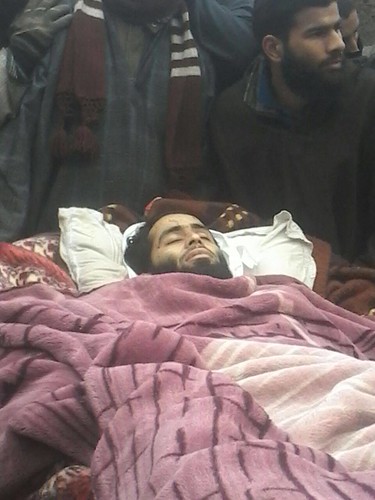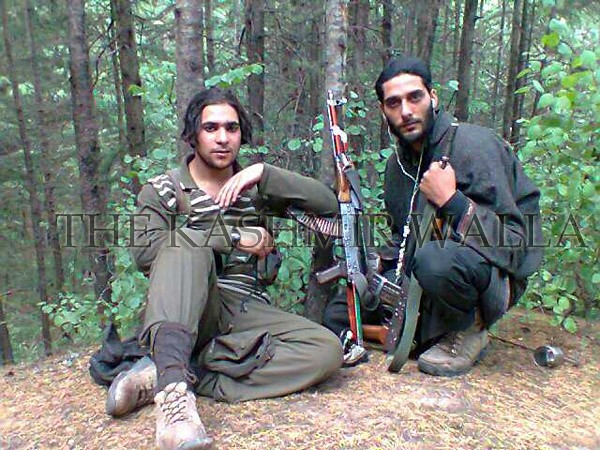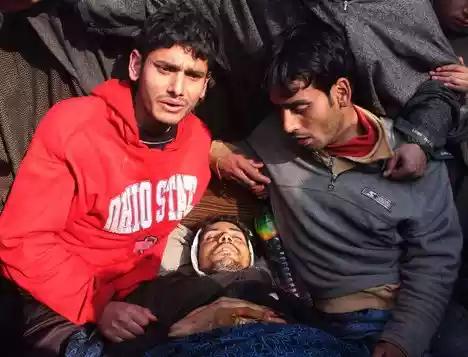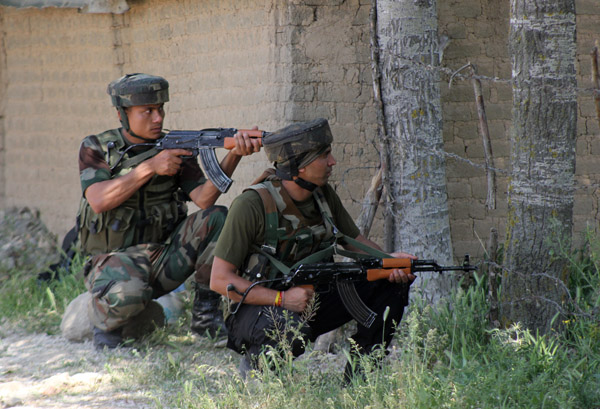Continued cases of educated youth joining militant ranks becoming a matter of great concern
By Raqib Hameed Naik, TwoCircles.net,
Srinagar: Militant Ashiq Hussain Dar, who was killed in an encounter in Heff Shermal area on Wednesday morning, had MA (English) and B Ed degrees to his credit besides a government job.
Ashiq, son of Ghulam Hassan Dar, a resident of Turkewangam village from south Kashmir’s Shopian district, was selected as Village Level Worker in the Jammu and Kashmir government in May 2014. Sources said, he joined militant ranks in August 2014 after working for three months.

Ashiq Dar, the slain militant killed in an encounter on Wednesday
Well qualified Ashiq, according to locals, had applied for jobs in departments of Education, Revenue, CAPD and Horticulture, and he was selected in all the departments. But instead of joining the services, he opted to join the militant ranks.
Unfortunately, he is not alone. Involvement of educated youth taking up arms was not new in Kashmir – example, even Syed Salahuddin, the Hizbul Mujahideen chief had a Masters in Political Science – but for last few years, there have been instances where militants killed were found to have high professional degrees with very potential of very bright careers.

Photo used for representational purpose. (Courtesy: Kashmir walla MIL)
The problem has been becoming graver as more and more educated youths are getting inclined to resistance movement instead of clamouring for white collar jobs. “At least 70 young Kashmiri youths joined the insurgency in the year 2014,” according to an Army report released on Tuesday, February 24, here.
Army records showed most of these joined the banned group Lashkar-e-Taiba, which has been accused of carrying out Mumbai attacks in 2008 (26/11).
At least 14 of them (of the 70) have been killed, army said. “Youth joining the militancy is disturbing,” Subrata Saha, the head of army in Kashmir, said recently, adding, “If educated youth are joining, it is more disturbing. It is certainly a cause of concern for us.”
Two of these recruits have doctorates and eight are post graduates, the army data showed.

Photo used for representational purpose.(Courtesy: Imran Nisar )
The trend of homegrown fighters joining the militancy started in 2010 after a summer of unrest, when 112 people were killed in clashes between police and protesters, according to a senior army officer. The decade before that had seen a lull in militancy. The numbers are still low compared with the 1990s.
In recent years, many cases of youths with bright careers, with some of them having professional degrees, joining militancy have come to the forefront. They included Rafiq Ahmad Ahangar, 23, alias Saifullah killed in an encounter in May 2013 in Pulwama. He had completed B Tech from a local engineering college. Another militant Masiullah Khan from south Kashmir, killed in 2011, had a degree in mechanical engineering. Sajad Yousuf, a Hizbul Mujahideen militant from Pulwama district, had a post-graduate degree in Islamic Studies.
Others include Omar Ahsan, 22, who was undergoing post-graduation in Physics and Lashkar-e-Toiba militants Muzamil Amin and Hilal Ahmad Rather, both of whom were qualified in Islamic teachings.
Most often, analysts say, what leads to young men disappearing and joining militants’ ranks is the killings, human rights violations and intolerance for dissent in Kashmir. What slowly translates into anger finally leads towards the path of militancy. Militant hardcore areas still exists, particularly in southern Kashmir areas such as Tral. And even if less in numbers, the new militants appear highly motivated. A Commanding Officer of the 42 Rashtriya Rifles Colonel MN Rai was killed in a gunfight with local militants in Tral area last month.

Photo used for representational purpose. Shahid Tantary Encounter.
In total, more than 50,000 militants, soldiers, police and civilians are thought to have died in the fighting in India’s only Muslim-majority state since the beginning of insurgency here.
Prominent social activist Rabia Altaf attributed the problem to unemployment and gross human rights violations in the state.
Touching the cord of the problem, she pointed out: “The educated youth has the capacity to analyse the situation and the political scenario. When youth sees cases of human rights violation such as Kunan Poshpra mass rapes case and Machail fake encounter case that remain undecided and that no action is taken against anyone, the youth feel there is no organisation or governmental decision on human rights violation. Thus it leaves them insecure.”
“Kashmiri youth is very sensitive, very emotional and highly egoistic. When their ego and sentiments are hit, they tend to go to any extent,” Altaf added
Mehboob Makhdoomi, a top columnist from Kashmir, disagrees it is a new trend. “The Kashmir issue has always been a cause of well-educated people. It is wrong to call it a new trend. It is palpable since over all literacy rate has increased. India has been very adamant and hasn’t allowed any democratic way for the Kashmiri youth to express themselves. It has hurt them physically as well as psychologically, which is what has pushed them to the wall,” he said.
Expressing serious apprehensions, Makhdoomi said, “We have lost an entire generation to militancy and we vehemently, don’t want to sacrifice another. The future looks very unpredictable and if conditions stay the way they are, we may be bracing up for very sad days, God forbid!”
The issue is now being debated and discussed across different sections of state, including the security agencies – the fact that the army acknowledged 70 such youth joined the militant ranks in 2014 – apart from civil society, political analyst within and outside Kashmir. The only good thing is seemingly introspection has started although positive results are nowhere in sight yet.
